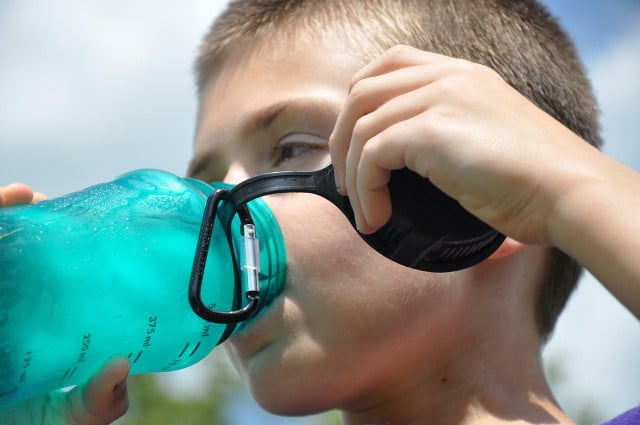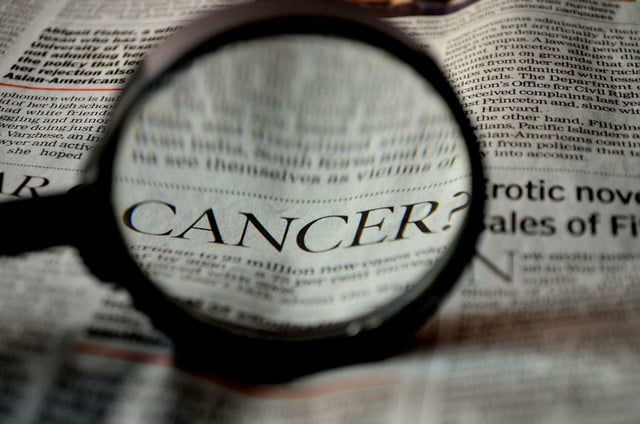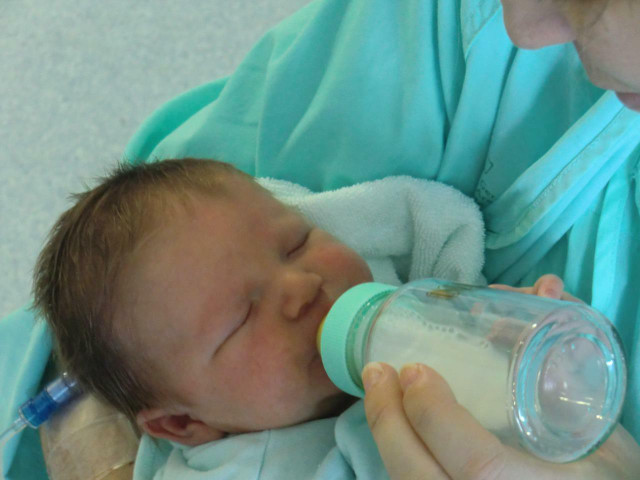Bisphenol S and F are just two of several new substitutes for the highly toxic bisphenol A. Are similar compounds really the solution, or an equally harmful substitute?
Complicated words and acronyms can really put us off a topic. Scientific terms can be confusing, which is why many of us know so little about the true nature of the chemicals we use and interact with everyday. Take bisphenol S, bisphenol F and bisphenol A for example.
Our ignorance can sometimes open the door for misleading marketing campaigns and leave us vulnerable to opportunistic capitalism. We often assume that a product labeled “free from” a dangerous substance is safe. The reality is that the alternative to the dangerous substance can be equally as harmful — or worse.
When it comes to understanding bisphenols and the harm they may cause, a little background knowledge is essential. So, we’ll try to keep it as simple as possible as we delve into the truth about one of the most commonly used and encountered chemicals.
Bisphenol S Is What Exactly?

(Foto: CC0 / Pixabay / PublicDomainPictures)
Bisphenols are a group of chemical compounds receiving growing attention from health experts and researchers worldwide — for all the wrong reasons. Bisphenol S and F are among their newer varieties which are currently being used as alternatives for better-known Bisphenol A (BPA) — a widely used compound in plastics, resins and many of our day-to-day items. Why? Because it looks as though our oldest bisphenol friend — BPA — has been killing us slowly for 70 years.
Given the frightening and constantly emerging data, BPA has now been regulated in many countries. These new regulations and ongoing bad press have led to the development of BPA substitutes such as bisphenol S (BPS), bisphenol F (BPF) and others. Many industries now claim to be BPA-free because they are using these chemicals instead.
Bisphenol S and bisphenol F are the most commonly utilized alternatives — despite sharing a similar chemical composition and characteristics with their toxic relative. You might be wondering if substituting a harmful compound like BPA with similar substances from the bisphenol group really is the way to improve our health outcomes. Or, is this just a way for industries to enhance marketing strategies and subsequent revenue, without really changing anything?
Let’s take a look at what we know so far about bisphenol family secrets to find out.
Bisphenol A-ttack on Human Health



(Foto: CC0 / Pixabay / GSquare)
Bisphenol A (BPA) has been used in enormous quantities in the creation of plastics and resins since the 1950s. We now know that since its mass introduction, it has been seeping its way into our bodies from bottles, the lining of food and drink cans, food packaging, dental materials, infant feeding cups and a massive array of other items it is present in. 70 years later, we are experiencing the consequences.
Validated research from all over the world has shown that BPA disrupts the human body’s equilibrium in various ways. It does this by influencing the endocrine system — which regulates our body functions through the action of hormones. BPA mimics the effects of the female hormone estrogen and belongs to a class of chemicals known as endocrine-disrupting chemicals (EDCs).
BPA is now undeniably linked with the development of poor health outcomes for mother and baby during pregnancy, for infants, children and adults. Current scientific evidence strongly supports links between BPA infiltration and:
- Cardiovascular and autoimmune diseases
- Reproductive and fertility disorders
- Breast, testicular and prostate cancers
- Erectile dysfunction
- Obesity and insulin resistance
- Diabetes and other metabolic disorders
- Neurotoxicity & immune toxicity
- Behavioral issues
- Fetal abnormalities
.
Bisphenol S for Substitute



(Foto: CC0 / Pixabay / PDPics)
Because bisphenol S and bisphenol F are not the commonly demonized BPA chemical, products containing these compounds can essentially be marketed as “BPA-free” goods. This means many consumers might assume that these products are disease and disorder-free too. However, a study finding that these chemicals induced cytotoxicity (toxic to cells) and apoptosis (programmed cell death) in rat and human stem cells would certainly disagree.
Researchers who found a positive correlation between the presence of all three bisphenols — A, S and F — and cryptorchidism (the absence of at least one testicle at birth) warn against the assumption that bisphenol S and F substitutes are any less toxic than BPA. They suggest that the compounds may mutually interact with each other in ways we are unaware of — and with other EDCs.
Researchers in California this year agreed. They advocate for further testing and studies to evaluate the potentially harmful effects of these structurally related chemicals before declaring them safe, having found that the bisphenol S and F exerted pro-tumor properties too. BPS did exhibit more negative effects than BPF, and similar findings are reported concerning cardiovascular disease, but sufficient evidence exists to question the safety of both compounds.
An extensive literature review in 2015 examined 32 academic studies and concluded that BPS and BPF are as hormonally active as BPA and have similar endocrine-disrupting effects. Another study published that same year also found that BPS and BPF have hormonal effects that are similar to those of BPA — and harm the physiological function of humans and rodents. Should we be alarmed? The US Food and Drug Administration (FDA), surprisingly, says no.



(Foto: CC0 / Pixabay / ManuelPacheco)
According to the FDA’s official website, BPA is safe and we are only exposed to it at very low levels. According to the Breast Cancer Prevention Partners, however, Americans are actually exposed to BPA at levels 5,000 times those deemed safe. A study analyzing urinary bisphenol levels in adults and children that were participating in the National Health and Nutrition Examination Survey would strongly indicate that they are right.
By testing over two and a half thousand urine samples from adults and children between 2013-214, they revealed that the vast majority of Americans had indeed been infiltrated by BPA. This study also found mass infiltration of bisphenol S and bisphenol F as well as BPA — indicating that the FDA may in fact be mistaken and need to take action on the known endocrine disruptor and its alternatives.
In 2012 and 2013, the FDA granted two petitions requesting that BPA-based materials no longer be used in baby bottles, sippy cups, and infant formula packaging, but have not taken further regulatory action since. The reason given is that the following year, FDA experts in toxicology, analytical chemistry, endocrinology, epidemiology and other disciplines completed a four-year review of more than 300 scientific studies. And, despite the fact that the science highlighting BPA’s estrogen-mimicking risks dates back to 1993 — this panel of experts did not find “any information in the evaluated studies to prompt a revision of FDA’s safety assessment of BPA in food packaging.”
6,000 kilotons of BPA was produced last year and the chemical is expected to reach global market revenue of over $30 billion by 2028. Bisphenol, whether it’s followed by any letter is big business and causes major disagreements between those with vested interests. Unanimous agreement on the dangers of BPA by a panel of experts convened by the European Food Safety Authority (EFSA) has been reached, finally. This, coupled with a formal petition filed by a collaboration of physicians, scientists, public health and environmental organizations this year has prompted the FDA to review its stance on the matter.
They have agreed to reconsider the safety of using BPA in polycarbonate plastics, metal can coatings and other materials that contact food, but no stance has been taken or recommendations made on the use of substitutes like BPS and BPF. The law requires that the FDA make a final decision by October 31 2022 — but the outcome will only be applicable to BPA and not its substitutes.
BPA-free Without Bisphenol S, F or P for Plastic



(Foto: CC0 / Pixabay / pixundfertig)
According to The Mayo Clinic, if you’re concerned about BPA, you can:
- Use BPA-free products and remember that some plastics marked with recycle code 3 or 7 may contain BPA.
- Avoid heating plastic containers in dishwashers or microwaves to avoid BPA seeping into food.
- Eat fresh whole foods. When you can, choose fresh whole fruits and vegetables.
- Use alternatives to plastic — like glass, porcelain or stainless steel.
Check out why you shouldn’t microwave plastic containers or read some of our tips for a life without plastic.
It’s easy to make simple changes, like choosing plastic wrap alternatives and avoiding black plastic completely.
You can also learn how to freeze food without plastic and if you really want to eliminate as much of the bisphenol family as you can — go plastic-free in 7 easy steps.
Read more:
- Plastic-Eating Mushrooms: They’re Real (& Some Are Edible)
- Plastiglomerate: Plastic Rocks Are a Horrible New Type of Pollution
- Plastic Packaging that Makes You Question Humanity
Important Information regarding Health-related Topics.
** Links to retailers marked with ** or underlined orange are partially partner links: If you buy here, you actively support Utopia.org, because we will receive a small part of the sales proceeds. More info.Do you like this post?







